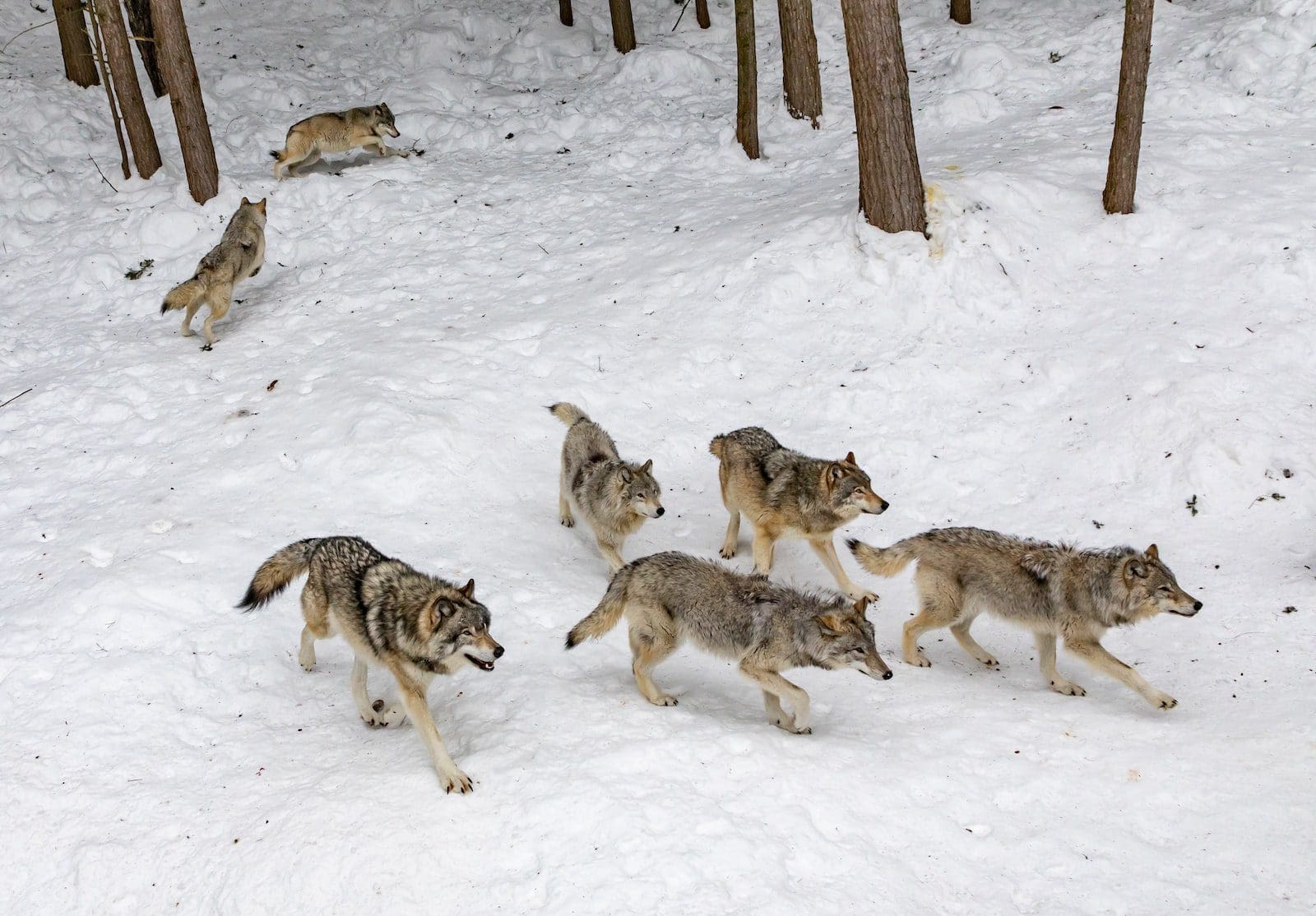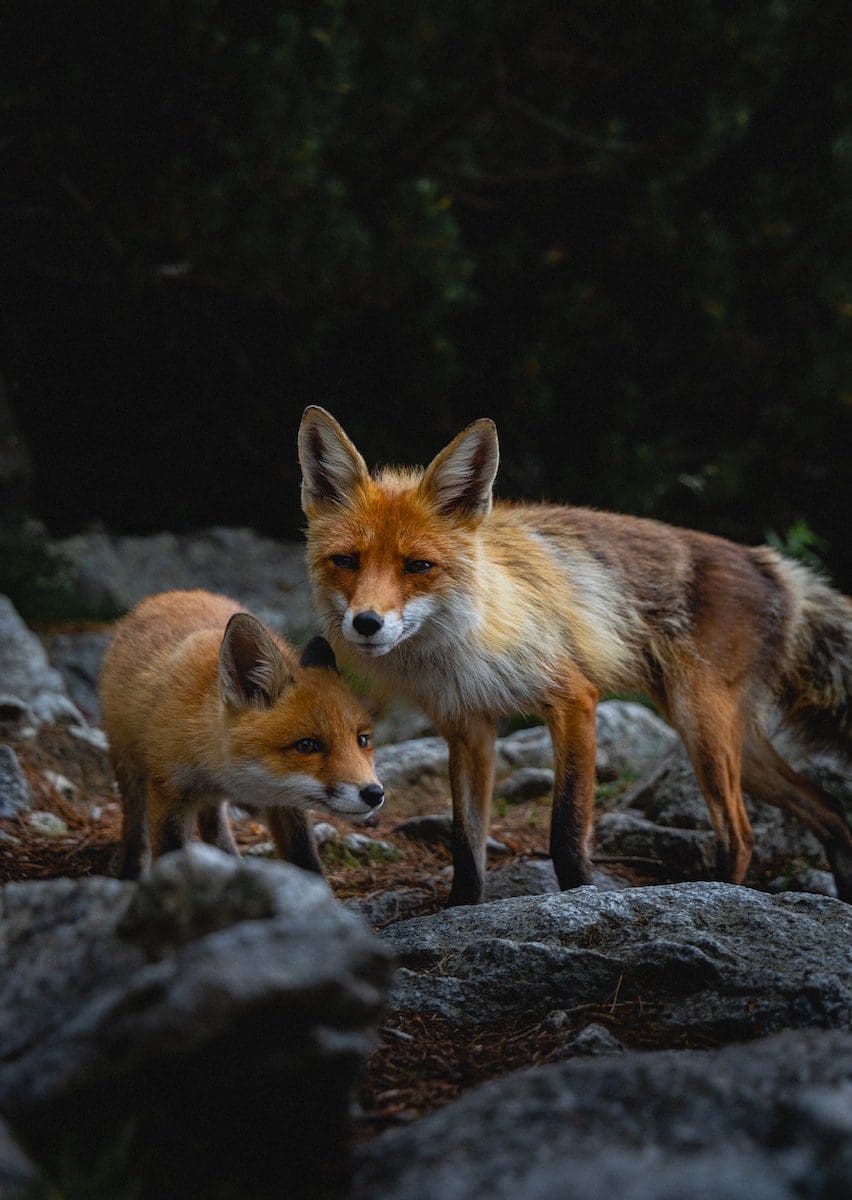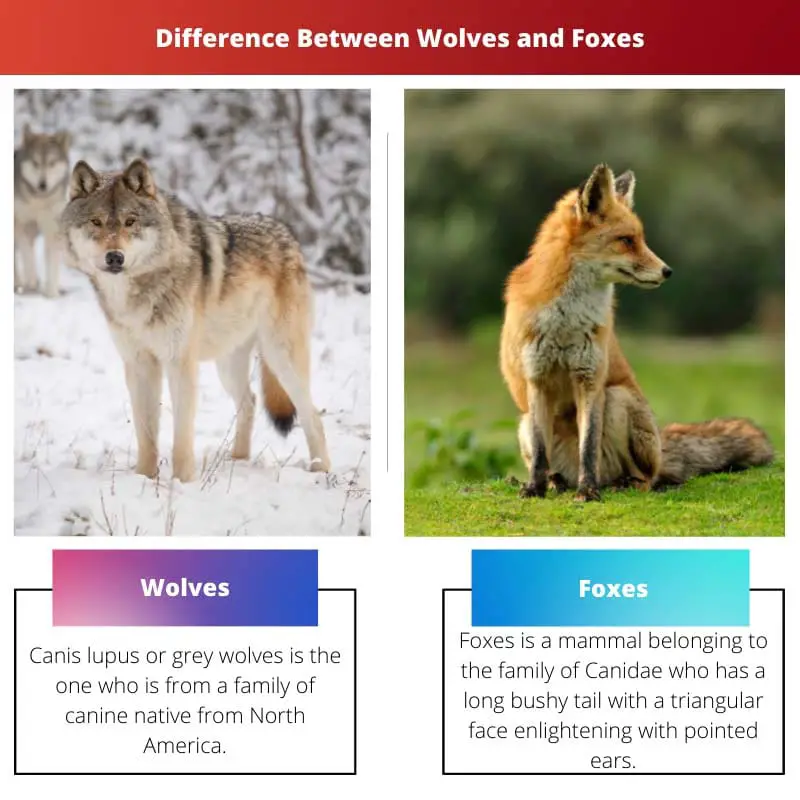Usually, when talking about Wolves and Foxes, we always have confusion, or one person in a debate creates it. Many times people conclude that wolves and foxes both are the same.
When it comes to size, Wolves are quite bigger compared to foxes. Wolves love to be united and together, whereas foxes don’t spend their lifetime in big packs.
Key Takeaways
- Wolves are large, social canids of the Canis, known for their pack behavior, strength, and adaptability in various environments.
- Foxes are smaller, more solitary canids of the genus Vulpes, recognized for their agility, cunning, and bushy tails.
- The primary distinctions between wolves and foxes are found in their size, social behavior, and physical features, with wolves being larger and more social than foxes.
Wolves vs. Foxes
Wolves are large, social animals known for their hunting and tracking abilities, and their howling is used to communicate and mark territory. Foxes are smaller and more solitary than wolves but are adaptable and can be found in various habitats. They are omnivorous and eat a variety of foods.

Comparison Table
| Parameter of Comparision | Wolves | Foxes |
|---|---|---|
| Size | Wolves are quite large compared to foxes. | Foxes are smaller compared to wolves. |
| Food | Wolves hunt for large animals. | Foxes have insects, fruits, and small animals to survive. |
| Relationship with Humans | Wolves don’t have friendly relations with humans at all. | Foxes have a friendly nature with humans. |
| Family | Wolves are always spotted together in huge packs. | Foxes have only 2 or 3 members together to live with. |
| Offsprings | Baby wolves are known as pups. | Baby foxes are known as kits. |
| Howling | Wolves are known for their scary howls. | Foxes howl not much compared to wolves. |
| Weight | The average adult wolves weigh around 150 pounds. | The casual weight of foxes is up to 30 pounds. |
| Height | Wolves are around 3 feet tall. | Foxes are around 1 foot tall. |
| Spot | Wolves are mostly found in the northern region. | Foxes are easy to spot. |
What are Wolves?
Canis lupus, or grey wolves, is from a family of canines native to North America.
Wolves have less-pointed ears, small torsos, and long tails. The wolves are very specific about their style of hunting and prey. Offspring of wolves tend to leave their parents to form and create their pack.
Respect towards territory and loyalty towards one pack is the most prominent feature of wolves. Pair of mates or single wolves have more success ratio of the number of hunting while of wolves in a respective pack.
Wolves can be easily infected with parasites and pathogens and are prone to rabies. Usually, wolves are carnivorous animals who love to hunt large animals, unlike foxes, who hunt for small rewards.
While the number of wolves is relatively less, attacks on human beings are rare since wolves love their privacy and live far from human residences.
People are known to be scared of wolves, but wolves also fear humans because of their different experiences with hunters and shooters. Wolves can eat a lot more than 5 kgs in just one sitting.
When we talk about prey, humans are not on their top list, though people try to kill them in self-defense at first sight. Wolves may show aggression when provoked, but at the extreme, they bite; attacks are rarest.
Wolves’ overall structure is made for stamina, and their legs and back are strong, making long journeys easy for them.
Wolves send signals to their pack members as howling for danger or protection. Wolves can never face failure in the hunt; their hunts depend on success, just 10 minutes, and sometimes, they take hours to do so.
Like swans, wolves being a mate to each other, lives together forever, even in the worst conditions; they choose to die together.
Species of Wolves:
- Gray Wolves
- Arctic Wolves
- Red Wolves
- Indian Wolves
- Himalayan Wolves
- Ethiopian Wolves
- Eastern Wolves

What are Foxes?
Fox is a mammal belonging to the family of Canidae that has a long bushy tail with a triangular face enlightening with pointed ears. Except for Antarctica, foxes are found almost everywhere on the globe.
The color of the fur of the foxes may differ from each other. Foxes are more active after sunset, just like cats. Foxes are said to have vertical pupils that tend to see clearly in dim or no light at all.
The existence of urban area foxes is comparatively more than foxes in non-urban areas.
Many foxes adapt to the human population and residential areas very prominently. Foxes are the first to use magnetic field power to catch their prey which is rare in other animals.
Arctic foxes tend to handle extremely cold weather, which other animals can’t bear to live in. Foxes can create at least 40 different sounds.
When the offspring of the foxes is born, he/she can’t hear, talk or walk, so that is a period where the mother needs to be careful about her children, whereas fathers are found hunting during that particular phase.
In a year, foxes can reproduce only once. Grey foxes among them are the only type of dog that has the power to climb trees.
Species of Foxes are:
- Red foxes
- Fennec foxes
- Arctic foxes
- Gray foxes
- Tibetan foxes
- Kitfoxes
- Bat-eared foxes
- Crab-eating foxes
- Corsac foxes
- Blanford’s foxes
- Hoary foxes
- Pampas foxes
- Island foxes
- Swift foxes
- Bengal foxes
- Darwin’s foxes
- Cape foxes
- Cozumel foxes and many more.

Main Differences Between Wolves and Foxes
- Wolves are not human-friendly, whereas foxes are.
- Height and weight are more of wolves than of the foxes.
- Howling is mostly observed in wolves compared to foxes.
- Wolves are rare compared to foxes.
- Wolves aim for large prey, whereas foxes are happy with small ones.




